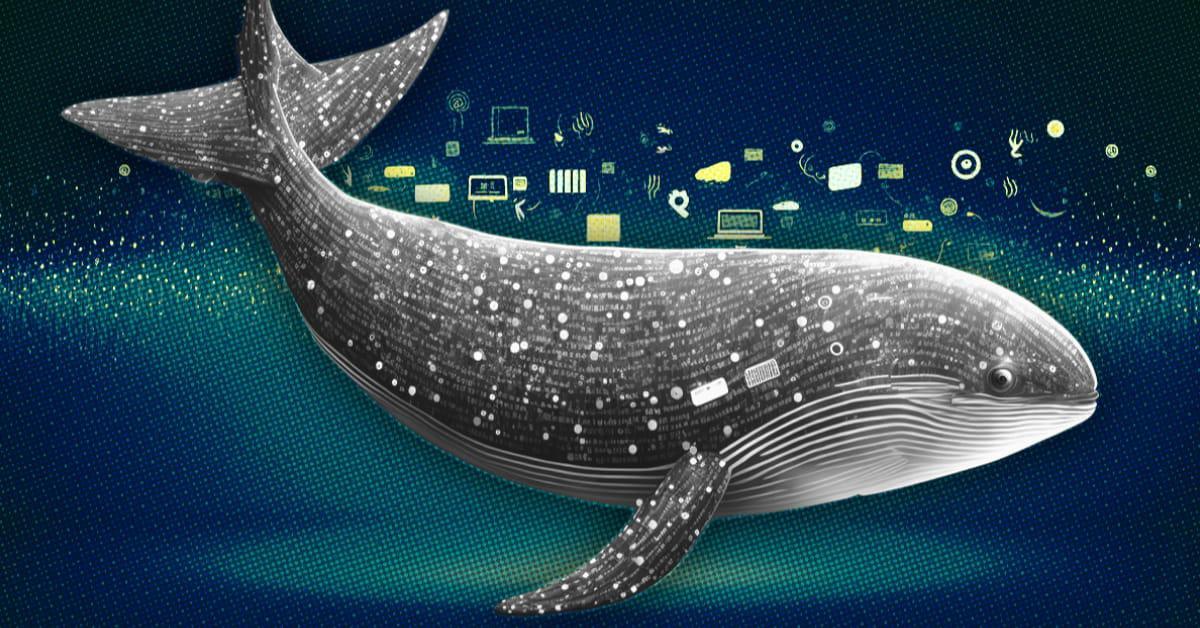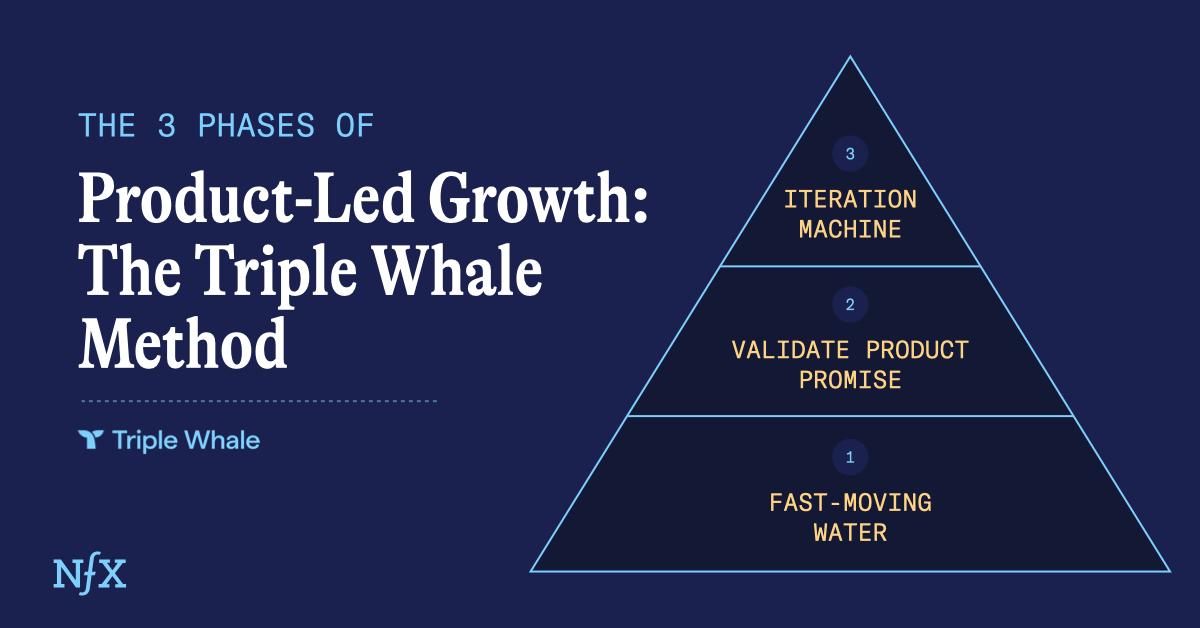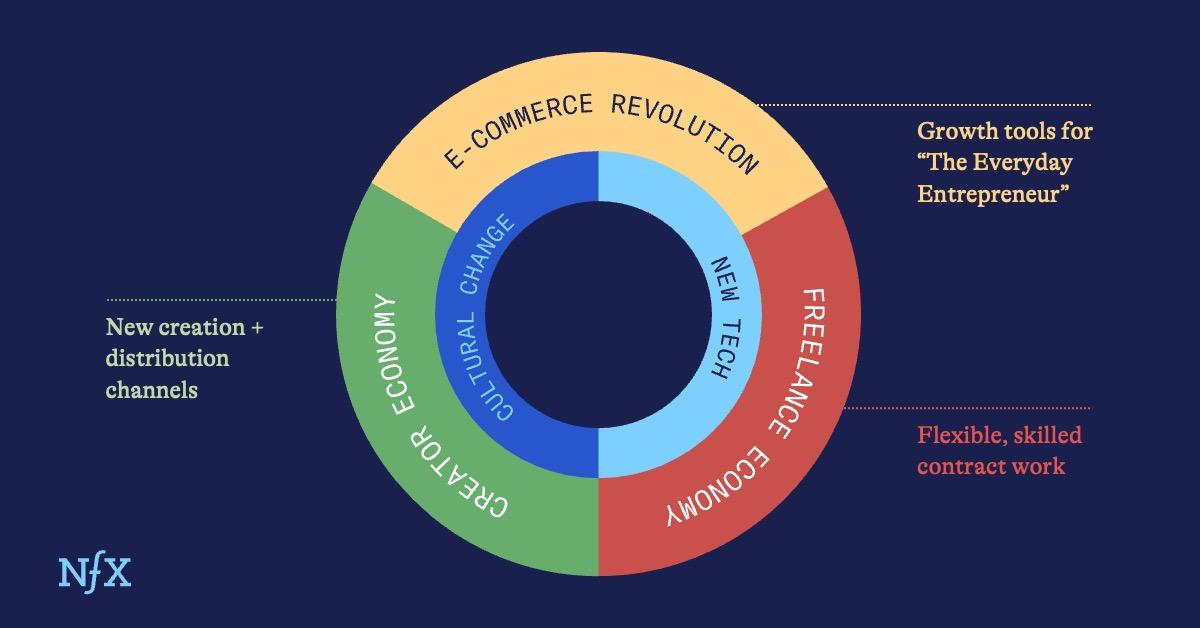

Truly product-led companies are countercyclical. Even in a downturn, when customers are shutting down or slashing spending, your product or service remains in their stack. You made something they can’t live without.
Love from the market is how the best companies gain ground – in any economic environment. It is the clearest sign of product-led growth. But it doesn’t just happen to you. There’s a playbook for it.
When we invested in Triple Whale at the very beginning, they only had a few hundred customers. But Twitter was hopping with Shopify sellers declaring their love for the product ,and telling everyone else how it helped them scale their businesses.
TripleWhale is a smart data platform for ecommerce brands, which unlocks real-time performance metrics that empower brands to make better decisions. Today, after an explosive year with more than 1,400% YoY growth from more than 5,000 paying brands generating $14 billion in sales, Triple Whale announced their $25 million in Series B funding, with strategic participation from Shopify.
The Triple Whale story is a crash course in product-led growth. Let’s deconstruct their insights and methods for your own startups.
You Can’t Have Product-Led Growth Without These 3 Things


Triple Whale’s growth method, simplified:
1. Find the fast-moving water: Triple Whale identified and quickly jumped into the fast-moving water around new ways that young people want to earn a living.
Everyday entrepreneurs are driving the next chapter of the ecommerce revolution.
Two thirds of Gen Z have indicated that they have started, or plan to start, their own businesses. Covid accelerated an already growing trend toward digital, independent entrepreneurship. The number of online stores doubled in 2021 compared to 2020. E-commerce revenue growth is expected to rebound in 2023 to an even higher growth rate than in pre-pandemic times.
As Shopify puts in their 2023 trend report: the COVID pandemic “accelerated e-commerce innovation and tech adoption by half a decade.”
We have a generation of motivated independent entrepreneurs who were empowered by existing tools, but, to distinguish themselves and scale, they’ll need to go deeper: into attribution, logistics, AI, and the other mechanics of their businesses.
2. Validate your product promise: The product promise is in fact the first step of finding your product-market fit (a well-known prerequisite for growth), and testing its validity should be done before spending effort on building the product. Triple Whale found a product idea they knew they wanted to use themselves (Founder-Product fit), and then started asking and testing to make sure others wanted it just as badly. We explain more below.
3. Set up your iteration machine: See how Triple Whale built an iteration machine driven by:
- Speed
- Lots of small product releases
- Constantly seeking customer feedback and product love.
Find The Fast-Moving Water
There are currents in every industry. They’re created by technology, market segment, distribution channels, teammates, and beliefs in your part of the world.
When it comes to finding fast-moving water, consumers are the leading indicator. But they’re often followed by small businesses, medium businesses, large enterprises, and finally governments. Everyone who wants to progress gets in the water eventually – but there is a huge advantage to getting there first.
When you find the fast-moving water, you’ll find that you grow a lot faster, even in a downturn. Underlying momentum pulls you forward.
We’re seeing 3 main currents around how young people want to make a living, the third of which is driving a new ecommerce revolution that Triple Whale is now leading.
Younger generations vastly prefer flexible, and diverse forms of work compared to early generations. 25 percent of 18-24 year olds work multiple jobs, and 51 percent do independent work. They’re more motivated to start (multiple) businesses than previous generations. And they’re building those businesses in three ways:


1. The Freelance Economy
The freelance economy began with individuals out there fending for themselves, typically siloed, trying to find clients on their own, and with no support networks.
Then we saw the rise of platforms like 99 Designs, Fiverr and Upwork that helped freelancers source work, often getting matched with quick, in-demand, low-lift tasks.
In the last few years, that approach has been moving toward making contract work more prestigious. More and more we are seeing individual knowledge workers eager to demonstrate their unique value and work with top companies. Leading the charge here: NFX-backed A.Team repositioned the whole idea and status of independent work and created a fast-growing, modern labor marketplace.
2. The Creator Economy
For years NFX has been tracking how people monetize creative skills with edge-case technology. During the Social Media Golden Age of 2002-2012, we saw the creation of entirely new social channels and formats that spawned a new generation of creators. People mastered writing tweets, running $1M YouTube channels, and promoting their work on Instagram and TikTok. Creators leveraged their social presence and followers to make money.
Today, Generative Tech is rapidly changing the way content is made and distributed in nearly every medium. This is uncomfortable for many. But for a handful of talented and fast early adopters, it’s a conveyor belt to the tall end of the power curve.
3. The Ecommerce Revolution
20 years ago, we saw network marketplaces become a truly viable career path. Companies like Shopify and Amazon supercharged the “everyday entrepreneur” and gave them the tools to open an online commerce business. As of September 2022, Shopify facilitated $136.2 billion of GMV, an increase of about 12 percent compared to 2021.
But once people started doing this, one thing became very clear: these ecommerce players didn’t have the tools they needed in order to become bigger and bigger.
Today, the complexity of running an online business has increased exponentially. Tracking attribution is a necessary but byzantine process. Large businesses invest billions in infrastructure allowing them to learn from their data and act upon it, but the average Shopify seller just can’t do that.
But the everyday entrepreneur is now maturing and demands better tools to understand their business and make informed decisions. That’s where Triple Whale comes in. They found the fast-moving water, and have the product-led strategy to capitalize on it.
Validate Your Product Promise
A few years ago, I wrote a piece about the “New Mindset for Product Market Fit.” Too many Founders think that PMF happens spontaneously. Instead, there’s a step that comes before it: finding and testing your product promise. This is the why behind your company.
It’s the pain point, why you feel your product needs to exist, and the reason someone would use it.
When I met Triple Whale co-founder and COO Maxx Blank, he was the ultimate everyday entrepreneur. He and his wife had already built two Shopify stores. Within five years, the two businesses they ran sold more than $30 million worth of goods. In his own words: “It’s not a massive business, but for my wife and I starting a business in our house…it was pretty amazing.”
Running a Shopify store on that scale, he says, is like day trading. Attribution across channels was becoming infinitely more complex. There’s a dizzying number of touchpoints spanning social media ads, email marketing, search engine optimization, influencer campaigns, and more. Without one centralized platform to track and analyze this data, sellers are left with inefficient campaigns and missed sales.
“We had zero visibility into which channels were helping drive revenue and which were a total waste of money,” explained Maxx. “We initially built Triple Whale to help us sell more ourselves, but immediately realized that we could help thousands of other entrepreneurs in our same position.” So they set out to prove it.
The Triple Whale founders had the great starting point of being a representative customer of their own market. In many cases this is the best type of founder-market-fit. But even if you are not your own perfect customer, you have to aggressively test whether the need that you perceive in your market is actually there. Go beyond yourself. Have the courage to check your assumptions and validate that thesis early on.
You can run experiments to test this thesis. Build landing pages and see which ones drive traffic. Build a community and solicit feedback. Test like crazy. Think like a mad scientist and experiment with language, art, positioning, potential features.
More on how to do that, here.
But finding and validating the product promise is the relatively easy part. The hard part is building something your users can’t live without.
Build Your Iteration Machine
A dream product only becomes a dream product because the people who use it, love it.
Triple Whale continuously improved their product by building a customer feedback machine. This machine requires two things: 1. Speed. 2. Asking your users: “What do you think?”
Triple Whale’s system for top-of-the-funnel engagement included hosting live events, obsessing over their Twitter community, creating a Slack channel of thousands of users and talking to them. Triple Whale’s Chief of Staff, Moe Mernick, says Triple Whale has generated “millions of monthly organic impressions” this way. They didn’t advertise; they just kept asking people what they wanted.
Then, Triple Whale didn’t agonize over whether the customer feedback was right. They saw the feedback patterns and moved fast. As AJ puts it: “We delivered super fast and in a fun way. Things don’t need to be 100% done. We’d just get it out and say, ‘What do you think?’ Then we could get feedback and iterate some more.”
There’s no shortcut for this. It’s about engineers willing to be up all night. It’s about not being afraid of your community. It’s about shipping before it’s perfect. It’s about decreasing the red tape within organizations to facilitate iteration.
When this works, you’ll know. From an investor perspective, we at NFX could see just how well this cycle resonated with the Triple Whale users. It was apparent that this cycle not just created the right products, but also enabled building them much faster than any other methodology could have enabled. A great recipe for growth.
When we were looking to invest, we saw signs all over the internet that people were excited about this product and its momentum. Without any money directed to marketing or traditional PR, Twitter was filled with people saying “We love Triple Whale. It changed my life.”
Underneath it all was this cycle of gathering feedback and implementing it immediately.
For example, within days of the rise of Generative Tech, Triple Whale was creating new AI-driven ad generators and launching them to their users. They’re already collecting feedback. The wheel keeps turning.
That flywheel is what ultimately transformed Triple Whale’s initial product market fit into product-led growth. It allowed them to grow at an unprecedented pace and is the reason why we are sure they will continue growing and delivering more value to e-commerce sellers on every aspect of their business.
Takeaways for Founders
- Lest you think the ecommerce revolution already happened (think eBay, Amazon, Rakuten), think again. We’re seeing a new generation of everyday ecommerce entrepreneurs who demand more sophisticated tools and are scaling larger and faster than before. There is fast-moving water here for companies like TripleWhale to build on.
- Product-led growth requires an updated social contract with your community.
- Asking your customers “What do you think” is a million-dollar question.
- As always with startups, speed is a competitive advantage.
- Love from the market is how the best companies gain ground – in any economic environment. Truly product-led companies are countercyclical. Time to play offense.
As Founders ourselves, we respect your time. That’s why we built BriefLink, a new software tool that minimizes the upfront time of getting the VC meeting. Simply tell us about your company in 9 easy questions, and you’ll hear from us if it’s a fit.

